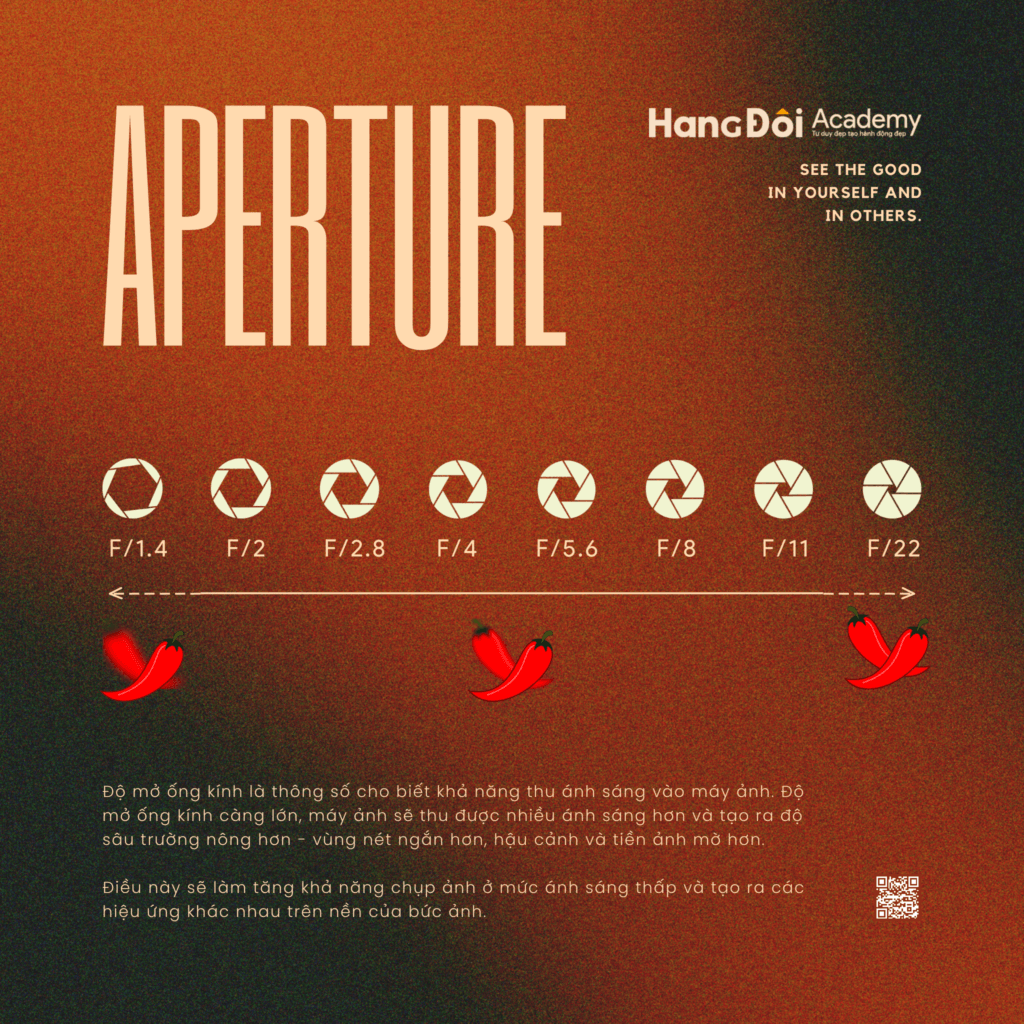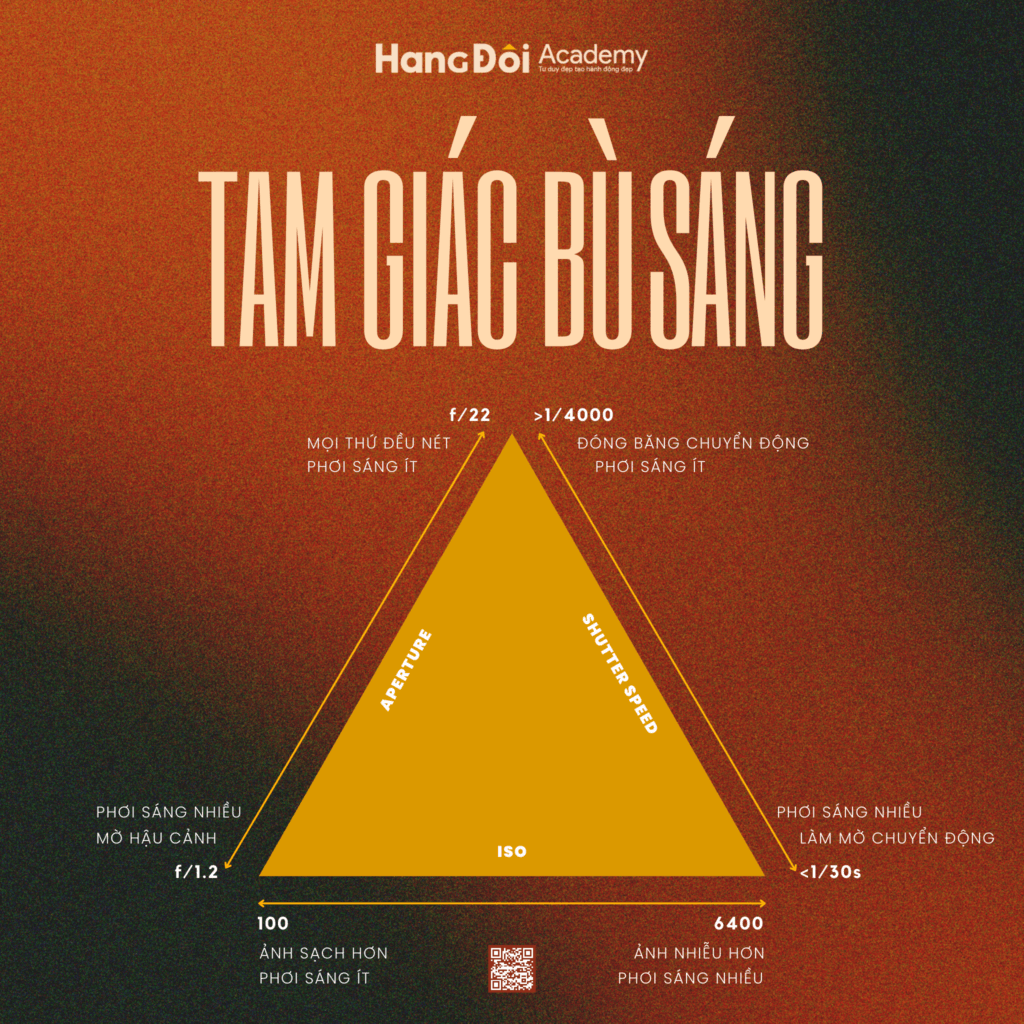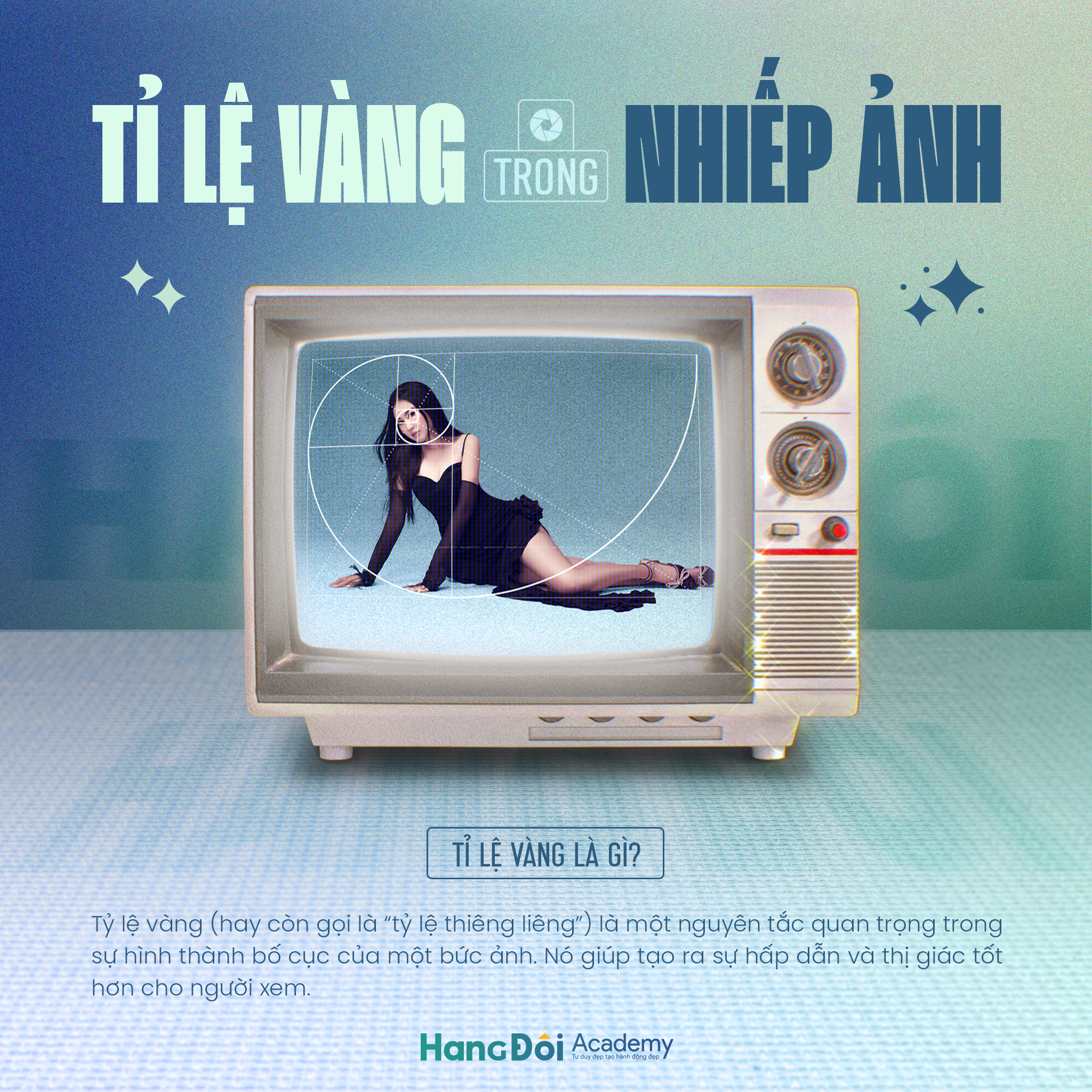In photography, light is the most important factor. To control the light in a photo, you need to master Compensation triangle – three basic elements include Aperture, Shutter Speed, and ISO. Let's join Hang Doi Academy to learn in detail each element and how they connect together to create a perfect photo.
Exposure Triangle: Understand to Master Photography – Hang Doi Academy
In photography, light is the most important factor. To control the light in a photo, you need to master Compensation triangle – three basic elements include Aperture, Shutter Speed, and ISO. Let's join Hang Doi Academy to learn in detail each element and how they connect together to create a perfect photo.
1. Aperture
Aperture is the opening of the lens that controls the amount of light that reaches the camera sensor. It is measured in f-stop (f/1.4, f/2.8, f/4,…). When you change the aperture, you not only change the brightness but also affect the depth of field.
- Large aperture (f/1.4 – f/2.8): More light in, creating effect background removal with blurred background (suitable for portraits).
- Small aperture (f/8 – f/22): Less light, everything in the photo will be clear from foreground to background (often used in landscape photography).
Aperture not only affects light but also determines depth of image. You can flexibly change the aperture to create effects or control the level of detail in the scene.

2. Shutter Speed
Shutter speed is the length of time the shutter is open to let light into the sensor. It is measured in seconds or fractions of a second (1/2000, 1/500, 1/30, etc.). Shutter Speed not only affects the amount of light, but also adjusts motion capture capabilities.
- High speed (1/1000 – 1/4000 sec): Freeze fast movements (sports, moving animals).
- Slow speed (1/30 – 1/2 second): Create motion blur effects (capture flowing water, night lights).
However, slower shutter speeds can also result in low light photo, so it is necessary to combine aperture and ISO to maintain light balance in the photo.

3. ISO
ISO is a measure of the camera sensor's sensitivity to light. The higher the ISO, the more sensitive the camera sensor is to light, allowing you to shoot in low light without having to change the aperture or shutter speed.
- Low ISO (100 – 400): Suitable for good lighting conditions (cleaner images, less noise).
- High ISO (1600 – 6400 or more): Helps shoot in low light environments, but can cause grain that reduces image quality.
Increasing the ISO too high will increase noise (grain) in the image, so you should only increase the ISO when necessary, especially in low light conditions or when you can't change the aperture and shutter speed.

Optimizing the Exposure Compensation Triangle
Chief Aperture, Shutter Speed, and ISO are all closely linked. When you change one element, you need to consider adjusting the remaining elements to maintain light balance in the photo. For example:
- When you reduce aperture For greater depth of field, you may need slow down shutter speed or increase ISO to keep the photo bright enough.
- If you increase shutter speed To freeze motion, you need increase aperture or increase ISO to compensate for light.
- When increase ISO In low light conditions, make sure you accept a certain level of noise so as not to degrade the image quality.

How to Use the Exposure Triangle
In Hang Doi Academy, we encourage students to practice directly to grasp how to adjust the Exposure Compensation Triangle. By understanding the interaction between Aperture, Shutter Speed, and ISO, you will have complete control over the lighting and photo quality as desired.
Tips:
- When shooting in a studio or with artificial light, you can keep Low ISO to avoid interference, and focus on tuning Aperture and Shutter Speed.
- With outdoor shooting, you should be flexible in changing all three elements based on the natural lighting situation.









